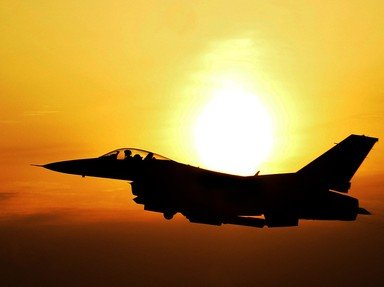Quiz Answer Key and Fun Facts
1. When this fighter plane rolled off the assembly line, pilots called it a dog (among other names!) because it was outclassed by its German Luftwaffe counterparts. But with the addition of a Rolls Royce engine it became one of the most feared Allied aircraft of World War II. Which plane was it?
2. This plane was of a very unusual design but it was as fast as - well - that's part of its name, which is____?
3. More than 400 of this German Bomber, the Dornier Do 17, were used in the Battle of Britain. Do you know its nickname?
4. This picture is of a Japanese Navy Nakajima B5N torpedo bomber. Allied pilots gave it a very western name. Do you know what it was?
5. The premier fighter of the German air force in World War II was this plane, whose design was started in the early 1930s. Can you name it?
6. One might be tempted to call this aircraft "the plane that won the war", yet on its second evaluation flight for the U.S. Army Air Corps it crashed. What is the name of this famous plane?
7. If the B-17 bomber helped win the war in Europe, this plane is said to be responsible for winning the Battle of Britain. Which British fighter plane is pictured here?
8. Not only did this plane drop bombs, it had a siren to scare the people on the ground as it did so. Which German dive bomber is pictured here?
9. Britain's top bomber of World War II was this four-engined craft named after an English city on the River Lune. Is that enough of a clue to guess its name?
10. This American bomber had a nickname but it could have been called the "nail biter". Do you know its real nickname?
11. Nowadays you can buy an automobile made by this company, but if you were with the Allies in the Pacific Theater in World War II you had to be on the lookout for which fighter plane made by Mitsubishi?
12. Sometimes small insects can cause some painful bites. Such was the case with this British fighter-bomber. Do you know its name?
13. The '190' was a German fighter plane with impressive capabilities. It outperformed early versions of several Allied fighters. Which company built it?
14. A land-based bomber used by the Imperial Japanese Navy Air Service was given the nickname "Cigar" by Japanese pilots. What did the Allies call it?
15. If you think something looks wrong with this photograph, you're right. This tendency to bounce after landing on an aircraft carrier deck was a characteristic of which airplane?
Source: Author
CmdrK
This quiz was reviewed by FunTrivia editor
stedman before going online.
Any errors found in FunTrivia content are routinely corrected through our feedback system.

